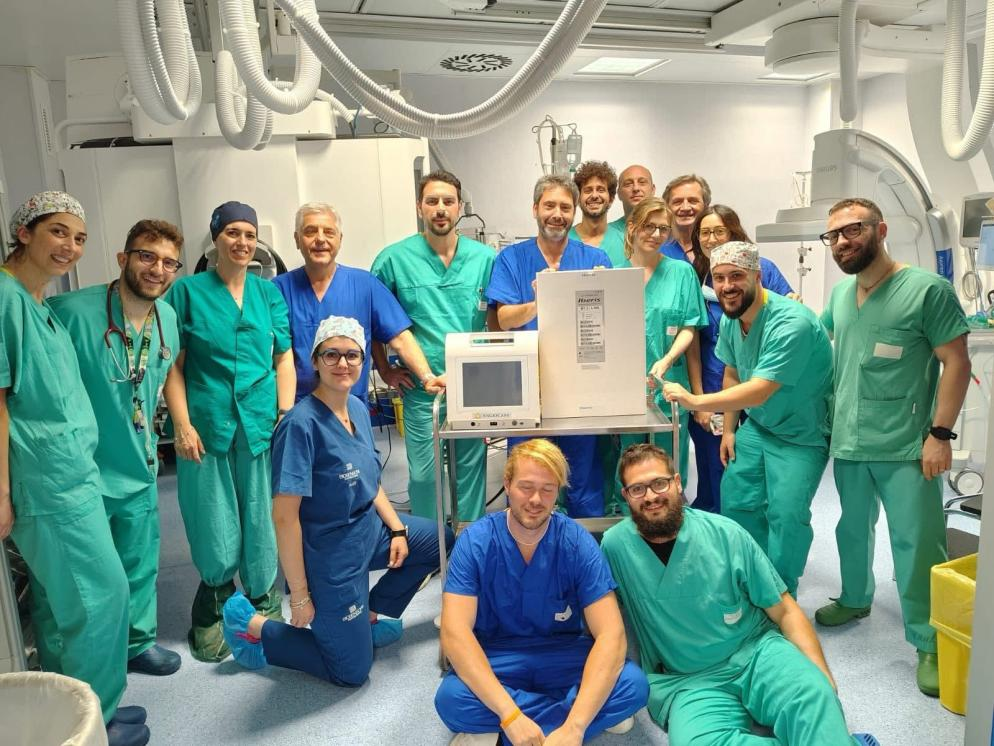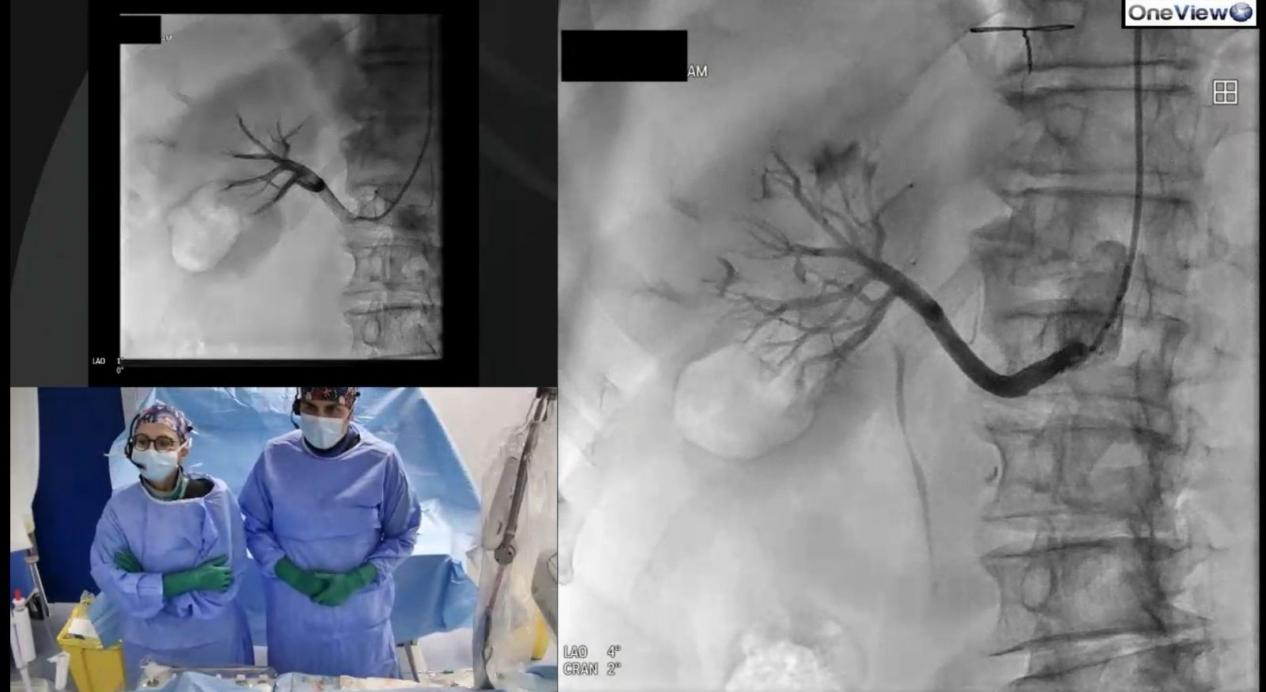
[Milestone Moment] The first renal denervation (RDN) in southern Italy was successfully performed at Maria SS Addolorata Hospital
2025-07-23 08:59:30
Recently, under the technical support of Biosensors International Group and Anton Medical, the Cardiology Team from Maria SS Addolorata Hospital in Eboli, Italy, successfully implemented the first Iberis System-based RDN surgery in southern Italy, and it is also the second center in Italy to carry out by this technology. This breakthrough marks another important milestone in the clinical application of the Iberis System in Europe.
The Core Advantages of IBERIS System
This surgery was led by Professor Michele Capasso, Director of Cardiology, in collaboration with a cardiac intervention team consisting of Dr. Geppina Eusebio, Dr. Emanuele De Vita, and Dr. Giuseppe Bottiglieri. The core advantages of IBERIS System are manifested in four aspects:
Firstly, it is the only innovative RDN intervention device approved for market worldwide that can achieve both transradial access and femoral artery access, providing flexible choices for clinical operations;
Secondly, it is designed as circular four-electrode ablation, combined with a slender catheter of <4Fr, and relies on the shape memory characteristic and superelasticity of nickel titanium tubes, allowing that it can accurately fit the complex anatomical structure of renal arteries (including branch vessels and accessory renal arteries), and possess stable and durable cell adhesion ability, thus achieving the therapeutic effect of “eliminating as much as possible”;
Thirdly, OTW-based ablation catheter together with the long specification setting of the transradial access, adapts to the renal artery opening, so as to enhance coaxiality and catheter stability during advancement, reduce trauma and complications, and improve health and economic benefits;
Fourthly, the system integrates cell adhesion assay, precise temperature control, and safety fuse functions. Through a real-time visual feedback system, it effectively improves the accuracy of surgical operations and the stability of treatment effects.
These advantages above enable the system to have the characteristics of minimal trauma and fast recovery, making day surgery possible and further benefiting patient prognosis and clinical practice.

The Course of the Operation
The patient is an 82 year old male. He experienced mild pain during the initial stage of surgery, and after adjusting medication regimen (adding propofol) by the anesthesia team, he showed stable vital signs and good tolerance throughout the entire procedure. This surgery used a local anesthesia+sedation anesthesia plan. After establishing the operating approach through the left transradial, non-selective angiography was performed by applying a pigtail catheter, and no abnormalities such as stenosis of the accessory renal artery and renal artery were observed. Subsequently, the 6F JR guiding catheter was inserted - based on the anatomical features of the upward movement of the renal artery, the surgeon preferred this model to enhance support strength; Meanwhile, due to the patient's shorter body shape, a 100cm long guiding catheter can meet the operational requirements. After the catheter was in place, the ablation catheter was smoothly delivered to the bilateral renal arteries along the BMW guiding wire, and the main trunk and branches were fully ablated in order from far to near, achieving the treatment goal of “eliminating as much as possible”. A cell adhesion assay was performed before each ablation to ensure a tight fit between the electrode and the vessel wall; The ablation parameters were set to RF energy of 6W, duration of 60 seconds, and impedance drop of approximately 10% to ensure ablation efficiency. Among them, the main trunk and branches of the right renal artery underwent 6 ablations (totaling 24 points), while that of the left renal artery also underwent 6 ablations using the same method (totaling 24 points). After ablation, a follow-up angiography showed unobstructed blood flow in both renal arteries and no complications such as dissection or thrombosis were observed. The surgical process was smooth and efficient, with taking less than 1 hour, and it was ultimately a complete success.

Further, this surgery introduced the OneView System for the first time. As an advanced intraoperative recording and real-time transmission technology, OneView System can achieve dynamic recording and remote real-time broadcasting of the entire surgical process, enabling physicians, resident physicians, and inter-center peers to participate in the surgical process in real-time through remote access. As emphasized by Professor Michele Capasso, the application of this technology not only helps optimize the patient diagnosis and treatment process, but also reflects the emphasis on continuous training of medical staff and inter-center knowledge sharing, which is the core element of the development of modern medical institutions.
Summary and Outlook
The success of IberisSystem-based RDN surgery provides a new treatment option for patients with refractory hypertension in the region. The hospital plans to incorporate the imaging data and technical details of this surgery into the continuing education program for grassroots physicians, in order to promote the standardization of technology and clinical application, and lay a solid foundation for the implementation of RDN technology in the region.
The successful application of Iberis System in southern Italy serves a valuable practical model for the technology extension in the field of hypertension intervention therapy in Europe. With the perfect training system for grassroots physicians and further inter-center collaboration, this innovative technology is expected to take root in more medical centers, bringing better clinical benefits to patients with refractory hypertension in Europe and helping the field of hypertension intervention therapy move towards a new stage.